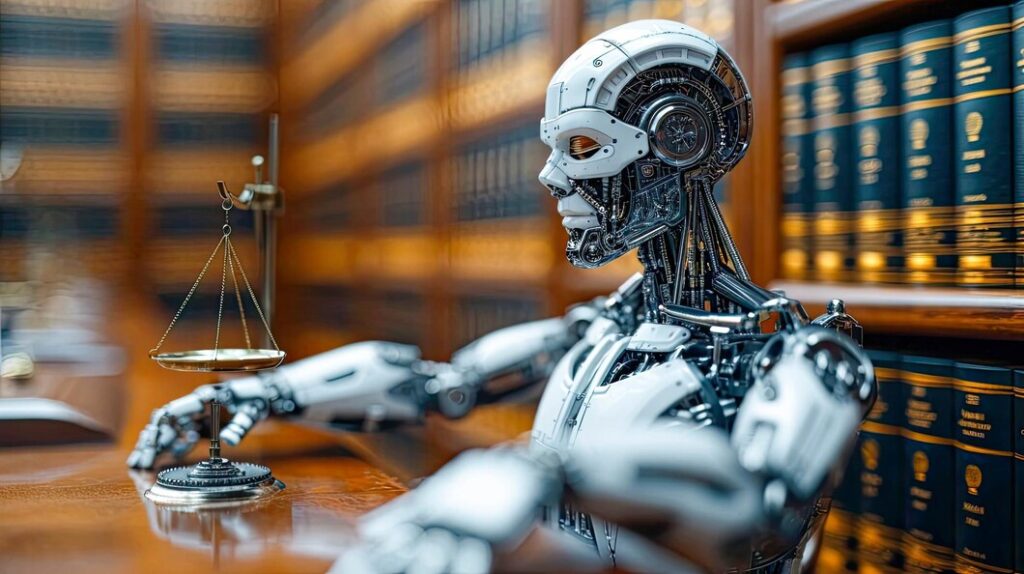Demystifying Advanced Mathematics through Insightful Legal Analogies

Civil law and tort cases often involve complex, multidimensional considerations, making them fertile ground for applying advanced mathematical concepts. While these abstract ideas may initially seem disconnected from the world of torts and personal injury, insightful analogies can bridge the gap, revealing the practical applications of these concepts in legal strategy.
1. Eigenvalues and Eigenvectors: Imagine each party’s legal strategy as a transformation matrix, with potential outcomes as vectors. Eigenvalues show how much each strategy scales potential outcomes (like increasing or decreasing damages), while eigenvectors show where strategies are most effective.
2. Convex Optimization: Picture your legal strategy as a landscape with hills and valleys. Convex optimization helps find the lowest valley point—the optimal strategy that maximizes success while adhering to legal constraints.
3. Matrix Factorization: Consider a personal injury case with multiple factors, such as negligence, damages, and liability. Matrix factorization breaks down these factors into simpler components, making it easier to analyze each aspect.
4. Taylor Series and Approximation: Simplify the opposing counsel’s strategy into basic components, helping you predict their moves and develop counterarguments.
5. Jacobian and Hessian Matrices: Analyze the impact of small changes in arguments/evidence on case outcomes, guiding strategic adjustments.
6. Singular Value Decomposition (SVD): Identify key factors that separate winning from losing cases, informing strategic focus areas.
7. Fourier Analysis: Detect patterns in opponents’ actions over time, predicting future behavior and adjusting your strategy accordingly.
8. Bayesian Statistics: Continuously update perspectives based on new evidence, mirroring Bayesian probability and inference.
9. Stochastic Calculus: Model uncertainties in legal proceedings and outcomes using stochastic processes, guiding risk assessment.
10. Information Theory: Quantify divergence between legal positions and evidence-based information using entropy and KL divergence.
11. Measure Theory: Rigorously define probabilities over complex outcome spaces beyond simple events, supporting advanced probabilistic reasoning.
12. Functional Analysis: Study properties of functions/operators representing legal rules and precedents applied across infinite cases, improving understanding of legal principles.
13. Numerical Methods: Efficiently solve high-dimensional optimization problems to identify optimal legal strategies, navigating complex case factors.
14. Topology: Understand continuity and convergence of legal arguments and precedents in high-dimensional case spaces, informing strategic planning and argument development.
Legal concepts, cases, rulings, remedies, and damages form the backbone of the legal system, and they share similarities with other repetitive, well-documented tasks that can be automated in certain aspects. Here’s how:
1. Case Analysis: A significant part of case analysis involves identifying patterns and correlations between facts, legal issues, and rulings. Machine learning algorithms can be trained on vast databases of legal documents to predict outcomes based on these patterns.
2. Legal Research: Automated tools can rapidly search, index, and cross-reference vast legal databases, reducing the time required for legal research. Natural language processing (NLP) algorithms can extract relevant information and summarize large volumes of legal text.
3. Document Generation: Automated document generation systems can produce standard legal documents such as contracts, wills, and court filings by filling in templates with client-specific information. This approach saves time and reduces errors compared to manual document preparation.
4. Case Management: Automated systems can streamline case management by tracking deadlines, sending reminders, and updating case information. This reduces administrative workload and helps lawyers focus on strategic tasks.
5. Prediction of Damages and Remedies: Using historical data and predictive analytics, machine learning algorithms can estimate potential damages and appropriate remedies, helping lawyers make better-informed decisions and advise their clients more effectively.
6. Legal Analytics: Advanced data analytics tools can provide insights into trends in case law, judicial behavior, and opposing counsel’s strategies, enabling lawyers to make data-driven decisions and tailor their approach to maximize success.
These engaging analogies transform abstract mathematical concepts into practical tools for analyzing and strategizing in civil law torts and personal injury cases. By connecting math to law through relatable examples, we can empower legal professionals with new ways to understand, predict, and navigate the complexities of civil law. Automation can be seen as a valuable tool that complements and augments lawyers’ capabilities, enabling them to provide more effective and efficient legal services.
5 Mins to Read: Bringing Law into Code: Representing Causes of Action with JavaScript Objects
8 Mins to Read: Unveiling the Hidden Math Behind Tort Law
10 Mins to Read: Building an AI Judge for Tort Law over Lunch
Contact: Troy@southpointeagency.com
Troy Trang
AI Prompt Engineer, Web developer
Staff & Writers
Our staff writers are highly experienced and well-versed in a variety of areas. Trust in our expertise to achieve the best outcome for your business.



















